Fun Ways to Review Vocabulary With High School Students
I'one thousand sharing 21 ideas for teaching vocabulary. You may not exist able to use all of them, but I hope you tin notice some ideas that will work well for you!
I've shared books about vocabulary instruction, besides as the theory and techniques. This post is a lot more practical. We're all about ideas today!
I'm sharing the blank bones of the ideas here.
I'thou adding lengthier explanations for some of them with more tips and fleshed-out instructions on my website devoted simply to vocabulary instruction, VocabularyLuau.
You'll come across that option at the end of the idea if it's bachelor.
IDEA #i: Semantic Maps
In this activeness, the teacher chooses a give-and-take and displays it for the form on a whiteboard, etc.
Students read the word and then think of words that come to heed when they see that give-and-take (this is awesome because it activates prior learning).
A list is created of all of the words that come to mind, and then those words are categorized.
This can be done as a whole class or in small groups.
Students then create a "map" using a graphic organizer and discuss it. Boosted or substitute categories can be suggested.
As students read through the text, they can add related words to the map.
Want more details on this strategy? Get the step-by-step on VocabularyLuau.
Thought #2: Eye Spy
Give students a list of words to search for in a text or have them find unfamiliar words.
You can accolade points to the words based on unlike criteria (longest new discussion, word with about consonants, etc.).
Invest in a gear up of inexpensive dollar store magnifying glasses to make this more game-similar.
This is a great pre-reading activity.
Want more details on this strategy? Get the pace-past-step on VocabularyLuau.
IDEA #3: Making Choices
Students show their understanding of vocabulary by saying the word when it applies, or remaining silent when it doesn't.
For example: "Say radiant if any of these things would make someone await radiant."
-Winning a million dollars.
-Earning a gold medal.
-Walking to the post office.
-Cleaning your room.
-Having a picture you painted hung in the school library.
(This thought is from the volume Bringing Words to Life, recommended in the books section.)
This is i of the key strategies teachers need in introducing new vocabulary. Because of that, I've written extensively and given a dozen examples from different texts for Kinder through 12th grade on VocabularyLuau.
IDEA #4: Sorting Hat
Apply a Harry Potter theme to take students sort words into categories. They can pull them out of a hat.
If yous give them the categories, it'due south called a "closed sort." If they come upwardly with their own categories, it'south called "open sort."
This one is and so, so fun. I explain lots more about how to do it on VocabularyLuau.
IDEA #5: Word Pairs
Give students words in pairs and have them evaluate if the words are the aforementioned, opposite, become together, or are unrelated.
This strategy is terrific for edifice critical thinking skills along with the vocabulary.
Go fifty-fifty more details and variations at VocabularyLuau.
(adapted from Give-and-take Power: What Every Educator Needs to Know near Teaching Vocabulary)
Idea #vi: Linear Array
In this strategy, students use a graphic organizer that is a rectangle, three ovals, and then some other rectangle, all in a line.
The word in question goes in the rectangle on the far left.
The rectangle on the far right is filled in with a word that is the opposite.
The middle three ovals are filled in with words that go from the far left to the far right, gradually become less like until they achieve the reverse.
For example, microscopic, tiny, small, bigger, big.
You tin can see examples of the graphic organizer, more details, and lots of variations on VocabularyLuau.
(adapted from Words, Words, Words: Teaching Vocabulary in Grades iv – 12)
IDEA #vii: Games
Many "real" games work well for vocab play and do. Games such as Bull, Taboo, Scrabble, Blurt, Bananagrams,give-and-take bingo, and others are fun.
There are online games as well, such as Scholastic'due south Synonym Toast.
[Note: I am a notoriously horrible Scrabble player, and every time I play I think, "English teachers should exist ameliorate at this." Information technology's not my favorite.]
IDEA #eight: Scavenger Hunt
Have a word scavenger hunt in books, magazines, articles on the cyberspace, or in the school or abode.
Don't just go for numbers; go for unusual words, academic vocabulary, weird spellings, homophones, etc.
Want more details on this strategy? Become the step-by-stride on VocabularyLuau.
Idea #9: Word Wheel
Copy and paste this image onto a sheet of cardstock and brand a vocab spinner game. EisforExplore shares the whole thought hither.
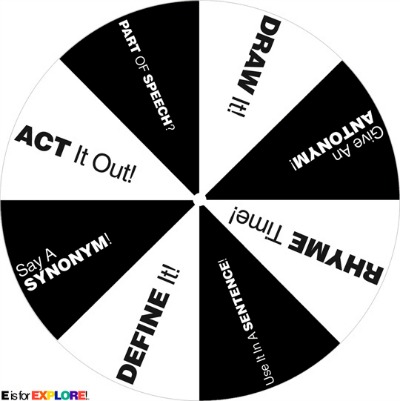
Want more details on this strategy? Get the step-by-step on VocabularyLuau.
IDEA #10: Vocabulary Photograph Album
Using a simple, cheap photo album, students create a visual glossary of key words.
I've got pictures of examples, details, and more ideas at VocabularyLuau, if you'd like to read more than.
IDEA #eleven: Tally
Use tally marks to track words you're trying to practice.
Marker whenever the teacher says the word in context, and mark twice when a student does.
Alternatively, you can accept the tally marks exist even, but play the teacher versus the grade.
In that location'due south so much more to this strategy. Larn more almost how tally marks can help you teach vocabulary at VocabularyLuau.
Thought #12: Vocabulary Relay
Print out words on one set up of cards (re-create this fix a few times) and definitions, context, or sentences in which they could be used (backup-the-blank) on another set (just one set).
Jumble upwardly the words in a pile in the center of the flooring, and jumble up the definitions, context, and sentences to proceed with yous. Pause students into teams of five-ish.
Phone call out the definition/context/judgement and requite students some think time (8 – 10 seconds) to talk about what word it might be.
After the discussion time, call out "Word!" 1 member from each team runs to the center and tries to observe the word in the pile.
I similar having multiple sets of the words and then more than one team tin get information technology.
Check to make certain they're right, and then discuss information technology briefly before the next round.
Notation: I got this idea from another teacher's site, but I cannot for the life of me remember where. I accept searched Google for it, and can't detect it. A modest prize to the person who can figure out the originator of the idea!
I've written quite a bit about it here, but I've written more (and accept lots of pictures of it in play) at VocabularyLuau.
Thought #13: Vocabulary Category Relay
This is a different relay activity than the 1 above, even though the names are and so like.
In this version, teams of students race to fill in words responsive to a category that start with the letters of the alphabet in social club.
This tin can exist done individually, in groups, or fifty-fifty equally a whole grade. It's also a good one for both digital and in-person education.
When I wrote about it on VocabularyLuau, I shared these score sheets for digital use, equally well every bit printable versions.
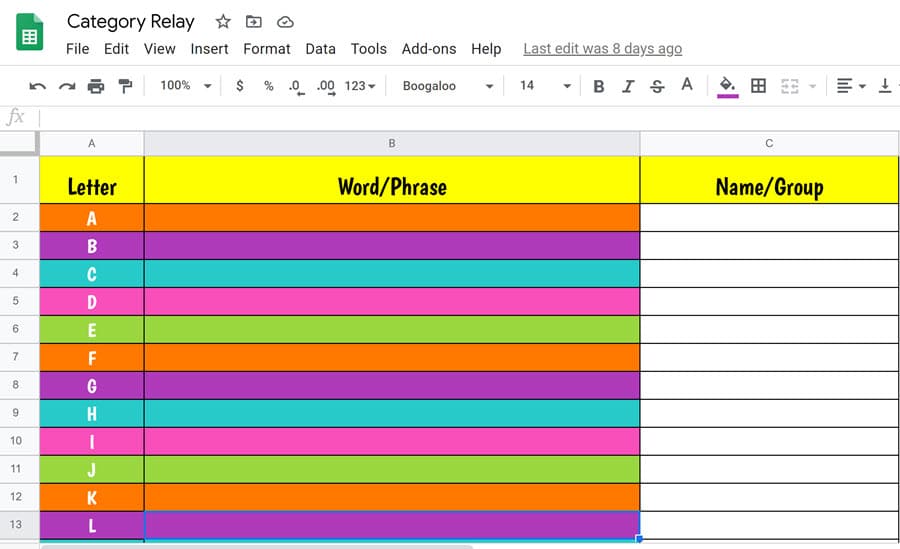
Thought #xiii: Comic Strip Discussion Activity
I got the idea for using comic strips from This Reading Mama.
In some ways, information technology's really a modified Frayer model.
I loved it so much that I started making them like crazy. It turns out that they let me get a articulate glimpse into how well the students had mastered the give-and-take.

I have an unabridged article about this, filled with loads of ideas and resources at VocabularyLuau.
Yous can check out that commodity here (or click the image beneath).
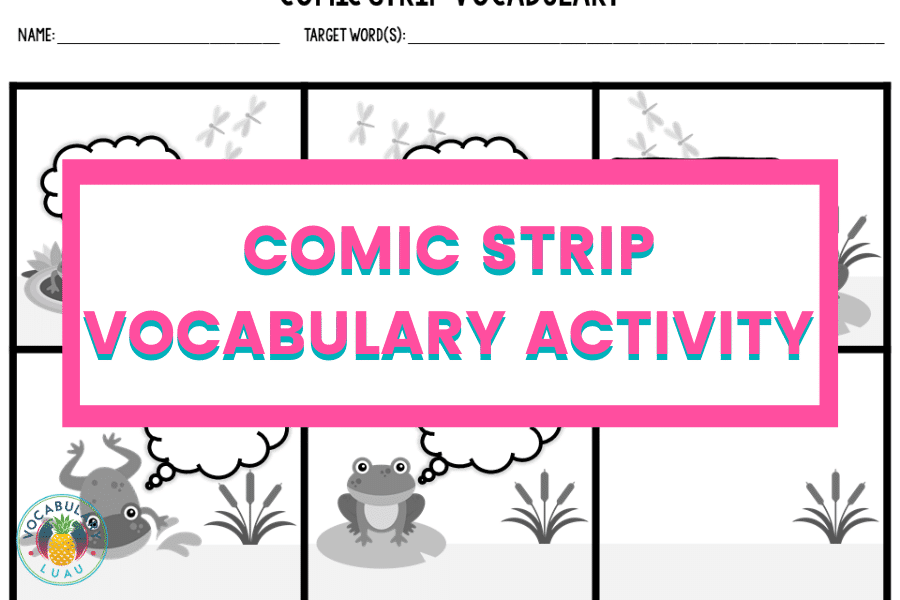
Idea #14: Paper Plate Vocab
I love this cheap matching game from Finding Joy in Fifth Grade, and I retrieve students could create it themselves.
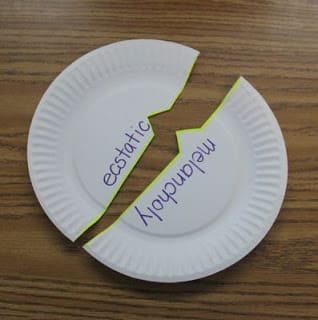
Thought #15: Heads Up Vocabulary Game
Students concur a word on a carte du jour in front of their foreheads. The students don't know what words they accept.
Students ask each other a series of questions to determine the meaning of their discussion. Or, students can give students clues to the person with the word to assist that person guess the word.
This is a review activity, and it's not for initial educational activity.
It's such a favorite that I wrote a very comprehensive commodity about it on VocabularyLuau. There's fifty-fifty a hack for printing on Post-it notes!
Thought #16: Discussion Sneak
Discussion Sneak is a game invented by Jimmy Fallon that he plays with guests on the Tonight Show.
In the game, Jimmy and the invitee each get a stack of cards with words on them that they have to piece of work into the chat naturally (without sounding forced or stilted).
Information technology's hysterical to lookout man and fun to play.
Information technology's also a great style to learn different means to approach a word.
It'south and then much fun that when I wrote the commodity nearly in on VocabularyLuau, I likewise included a Tonight Evidence backdrop you can use in class to requite it an fifty-fifty more "existent" experience.

IDEA #17: Frayer Model
The Frayer Model is an oldie-but-goodie vocab activeness model in which student work in multiple means in a specifically laid out graphic organizer to engage with words.
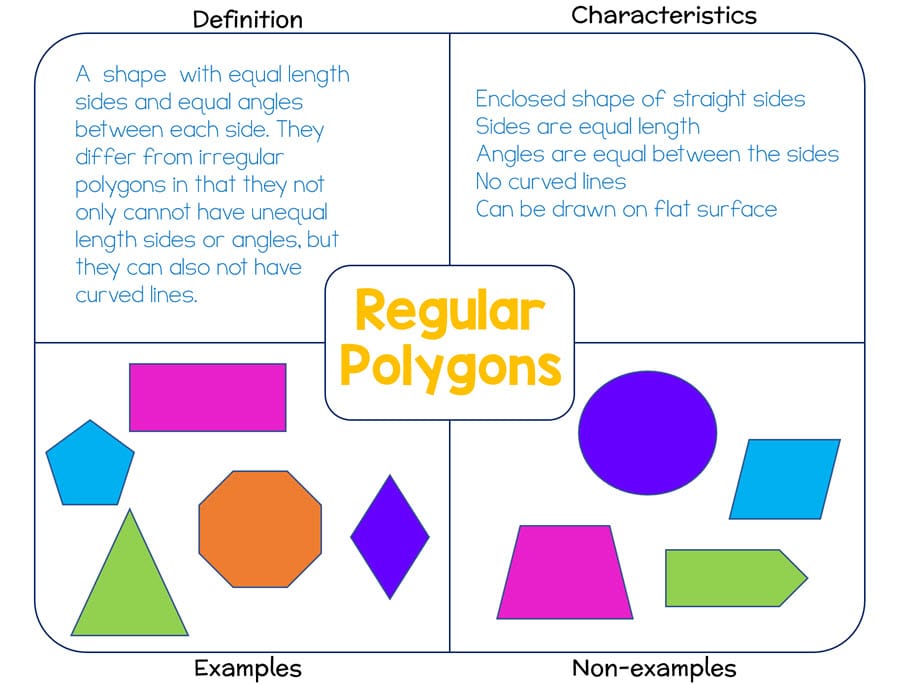
This is such a must-know that I wrote a (very lengthy and detailed) plan for how to use information technology at VocabularyLuau.
It includes downloads and printables and digital versions, too every bit exactly how (and why) to use this strategy.
If yous are not familiar with it, delight do yourself a solid and read more than.
Idea #18: Tweet
Have students create a "tweet" that a word would send out or with the word in the tweet in context.
Yous tin can employ a tool like PrankmeNot or Siminator to make it look real.
This strategy is and then fun and so useful!
I've written about five dissimilar means to do this (with examples) on VocabularyLuau, and I even have this gratuitous template for you at that place:
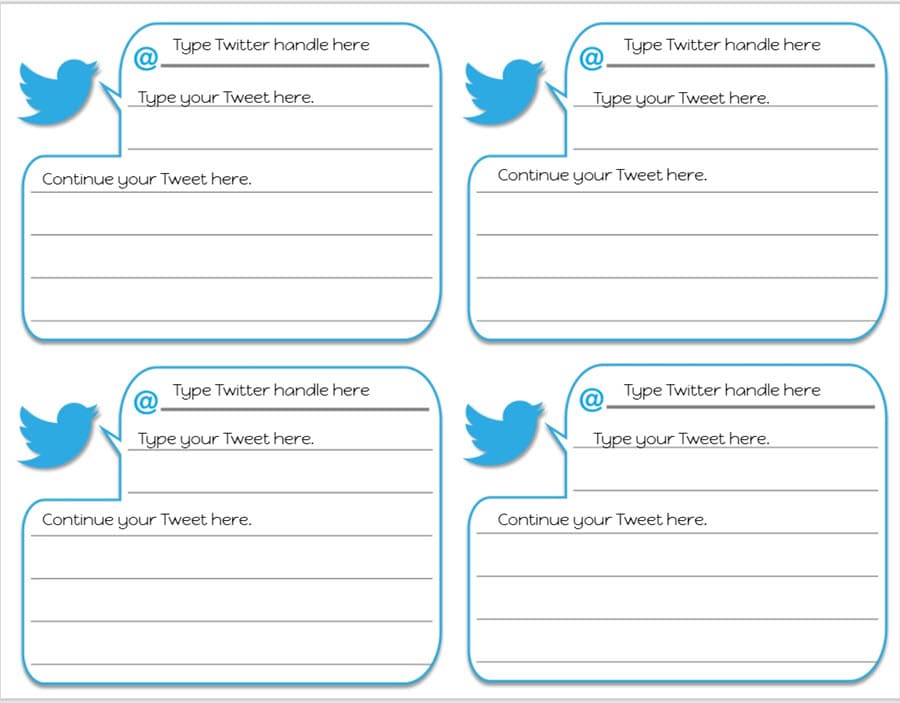
IDEA #nineteen: Brain Power Words
This is a strong academic vocabulary activity that takes a little bit of fourth dimension, but would actually aid become the words by the superficial level of understanding.
- Inquire small groups of students to preview sections of a text and identify difficult words.
- For long capacity, assign different sections to unlike groups.
- Students place a Post-information technology next to the words in the text they identify as potentially difficult.
- After identifying the words, the group goes back and uses context clues to hypothesize what the words might mean.
- Clues of substitution: A known word would make sense in the context and is probably a skilful definition.
- Clues of definition: The word is defined in the text (many textbooks do this).
- Clues of opposition: Words "not, unlike" etc. are splendid clues to what a word is not and thus assist define the words.
- Subsequently the Brain Power Words list is identified and definitions sought, the students check their piece of work with the teacher.
This strategy is from Becky McTague and Margaret Richek (it's in the book Reading Success for Struggling Adolescent Learners by Susan Lenski and Jill Lewis).
IDEA #xx: The Concept Cube
A concept cube is apattern that is printed on paper or cardstock, cut out, folded, and taped into a three-dimensional cube.
Students write, type, or depict on the pattern prior to assembling the cube, thenthey "play" with the cube to explore concepts.
Depending upon the manner y'all choose to employ it, they tin can exist similar to a 3-dimensional Frayer model.
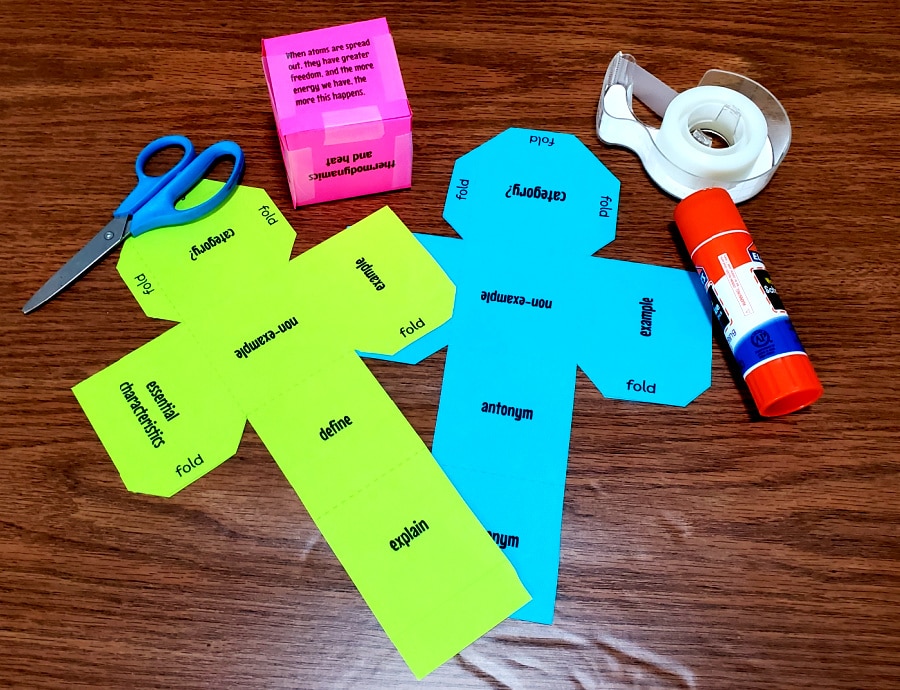
You lot can print out a blank cube and have students print the responses below, or complete it online then print it out.
Before folding, students write clearly in each square post-obit the directions below.
Each student is given one challenging vocabulary word from a contempo reading and asked to:
- Write the assigned vocabulary discussion in 1 square.
- Write a synonym (word or phrase) in another square.
- Write an antithesis (word or phrase) in another foursquare.
- Write a category or categories it could vest to.
- Write the essential characteristics of the concept of this word.
- Give one example.
Cut, fold, and tape the cube.
Ringlet the cube and read what comes up on the "pinnacle"; the educatee must tell the relationship of that word or phrase to the original discussion.
After students know their own cube without any errors, they exchange with a peer.
You can get more than ideas and details, as well as a complimentary printable, at VocabularyLuau.
IDEA #21: Phone a Friend
Search TeacherspayTeachers or Teachers Notebook for vocabulary activities y'all tin utilize or adapt.
The beauty of this is that you can search by class level and discipline, then y'all can focus on what you're studying.
A caveat to this is that if you lot create something course level or content specific, you can share it with other teachers, also.
The Importance of a Variety of Activities
You desire to have a variety of activities so that vocabulary instruction doesn't go routine or tedious.
Keeping it fresh with lots of dissimilar ways of learning will help students (and the instructor) avoid getting burned out or tired of working with vocabulary.
At that place'southward been so much interest in this that I created an entire website simply for vocab ideas called VocabularyLuau.
These 21 activities for instruction vocabulary are just a start. I'd love to know your ideas!
The Vocabulary Series
This post is Part 3 of a four-part series on teaching vocabulary. If you would like to check out the rest of the series, visit the posts beneath
- Instruction Vocabulary: The books
- Theories & Techniques that work (and don't)
- 21 Activities for Teaching Vocabulary (this one)
- Ideas for English language Language Learners
There'southward even a great book for teaching vocabulary!
These ideas work for all vocabulary words.
If your students need to learn vocabulary words and terms that are specific to your content (words like astute angle or latitude or simile or biome), have I got a book for you!
Yous know how I know it'due south great? I wrote it! I wrote it for teachers just like you from the method I created in my ain grade with my own students and tested over and over.
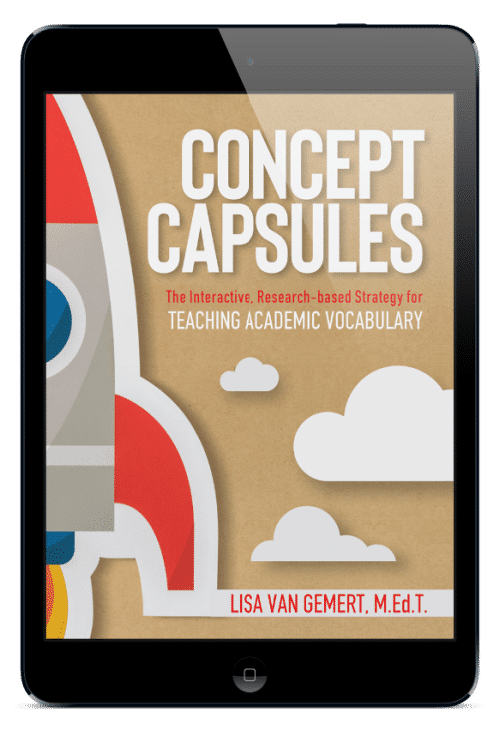
You can learn more about information technology past clicking on the motion picture of it, or yous can read more and come across loads of examples here.
If you lot already know you desire it, y'all tin grab a paperback version on Amazon.
Or, if y'all desire a digital copy, y'all can employ the coupon code GIFTEDGURU for 20% off you can…
Grab your copy
Exercise You lot Similar Peachy Ideas?
If then, I share them in my email o' goodness that goes out virtually once a month to thousands of people just like you lot.
You tin sign up here (it's free).
Notation: This content uses referral links. Read my disclosure policy (it'southward fascinating) for more info.
schermerhornwilbeend.blogspot.com
Source: https://www.giftedguru.com/21_ideas_for_teaching_vocabulary/
0 Response to "Fun Ways to Review Vocabulary With High School Students"
Postar um comentário